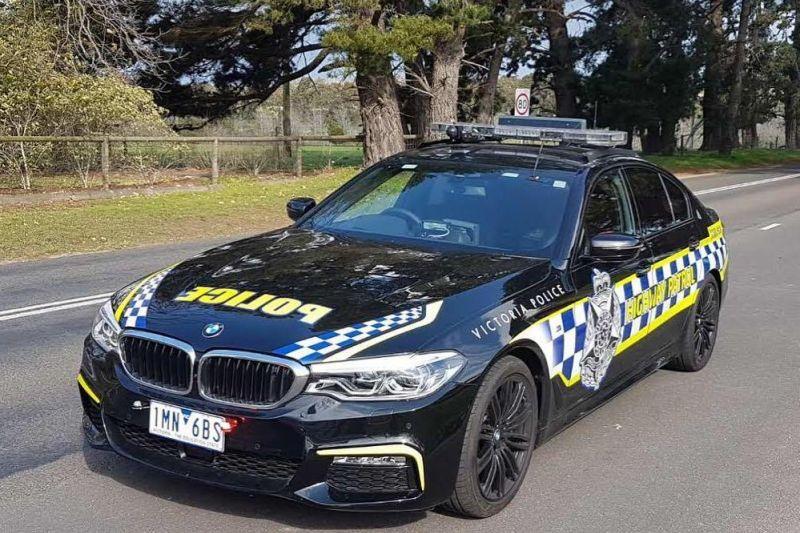Police are exempt from a number of road rules, including speeding.
How exempt? It depends on the type of licence the police officer holds, along with the reason for their speed.
Is driving at a peak of 230km/h, overtaking 77 other motorists and driving at an average speed of 205km/h on a 8.7km stretch of freeway to reach an injured colleague pushing the friendship?
That’s what a police officer did in March 2021, after receiving a call over the radio to attend a crash involving another officer down the road.
Leading Senior Constable Bradley Beecroft, a highway patrol officer with 16 years experience, is facing 10 years in jail for the charge of reckless conduct endangering life for the incident, where he drove at over double the 110km/h speed limit.
Common sense would suggest getting there as quickly as possible is a good thing – and if it was my family member in trouble I’d want as much help as possible, as fast as possible…
But common sense has been removed from the debate around speed in Australia by decades of brainwashing, hidden cameras, and zero-tolerance enforcement from Governments drunk on the cash it brings.
Punishing Mr Beecroft seems crazy, given he’s a trained officer doing his job… but not punishing him undermines the idea that speeding of any kind is deadly, and needs to be fiercely punished. What would you do?
The facts, according to the ABC, are Mr Beecroft switched on lights and sirens on the Hume Freeway after being advised he was the closest unit to the collision involving his colleague. He had another officer in the vehicle, who watched on as he drove at high speed towards his injured colleague.
During this seven minute stint of “urgent duty” driving Mr Beecroft overtook 77 cars, drove at a peak of 230km/h, and blew through a fixed speed camera at 207km/h in a 110km/h zone. He averaged 205km/h over the 8.7km stretch of driving.
He was allowed to exceed the speed limit and perform ‘urgent duty’ driving because he holds a gold licence (we’ll explain that soon) within the police force.
He provided assistance when he arrived, before his colleague spent a night in hospital recovering from their injuries.
In addition to Mr Beecroft’s highway patrol vehicle, five other units attended the crash scene. They too exceeded the speed limit, reaching speeds of between 141km/h and 166.9km/h.
Three of those vehicles were “general duty” vehicles, while the other two were highway patrol vehicles.
I wanted to get a better understanding of what’s involved in obtaining a gold licence, so I spoke with an experienced highway patrol officer who offered details on the course, but asked to be kept anonymous.
The two-week gold licence course includes both road and track elements to test the skills of the officer, but also to help them develop “urgent duty” driving skills that require a mix of high-speed driving around slower vehicles and a requirement to radio constant updates to a supervising officer.
At any point during a pursuit, the driver of the police vehicle, any passenger in the officer’s vehicle, or any officer listening on the radio can terminate the pursuit if it’s not deemed an “imperative pursuit”; a pursuit that only concludes when the offending vehicle is stopped.
The on-road component of the gold licence test requires speeds up to around 160km/h, and officers are required to demonstrate an understanding of their surroundings and an ability to follow procedures including signalling, radio updates, awareness of surroundings.
It also places a focus on car control, steering input, and driving lines.
A track component bumps speeds up to more than 200km/h and further focuses on car control at speed, monitoring vehicle heat loads, and managing the vehicle’s braking performance in wet and dry conditions.
The officer we spoke to said 200km/h in a BMW 5 Series felt like 150km/h in an SS Commodore, and claimed the 5 Series felt far more planted at speed than Australian metal did.
If you take this training into consideration, it’s also worth considering the BMW 530d police use in Australia can legally travel at up to 250km/h (its soft limiter) on derestricted sections of the Autobahn in Germany.
It’s not uncommon to see anything from a Volkswagen Polo to a Ford Transit sitting at more than 160km/h on a German highway.
Why is it that in Australia when a police officer drives at a speed they are trained to drive, in a vehicle that’s engineered to travel at that speed, they now face 10 years in jail for doing their job?
It’s the fixation we have on upholding a zero-tolerance approach to speeding. The approach maintains a government narrative that it’s okay for a speed camera to send you an infringement notice in the mail for failing to “wipe off five”.
It sets and maintains the narrative it’s safe to sit in a truck’s blind spot on a freeway with average speed enforcement, because going any faster is unsafe and will see you slapped with an infringement for exceeding the limit.
This case has the potential to set a nasty precedent for emergency service workers, who could wind up like many of the numb-brained drivers on our road that spend more time studying their speedometers than they do watching the road.
The conundrum around the government’s position on speed enforcement remains, though. They can’t exactly let this police officer off, but send you an infringement in the mail for doing 2km/h over the speed limit. And if driving at 230km/h is deemed to be unsafe, why is there no formal cap on the speed police can do?
Don’t get me wrong, speed enforcement isn’t bad. There are many times where excessive speed can and does lead to serious accidents. But like anything, it should be used in moderation. We are currently drunk on the narrative that any speed over the speed limit will kill you. It’s simply not true.
Victoria Police is in a tricky situation here, created by generations of bureaucrats instead of the officers forced to enforce the rules.
We need to be funnelling as much money as we possibly can into driver training. It’s not okay that you can get a licence in this country by sitting a 45 minute test that often doesn’t see the car exceed 60km/h.
It’s a test that determines whether you can park a car and brake at a stop sign. It does nothing to help you understand the limits of a vehicle and to drive to the conditions and your surroundings.
We are in a really troubling place at the moment, and I wish the officer all the best in arguing that they were indeed doing their job and trying to help a colleague out.
I sure as hell would want him coming to my aid above and beyond an officer terrified of driving a vehicle they were trained to drive at a speed within the vehicle’s limits.














